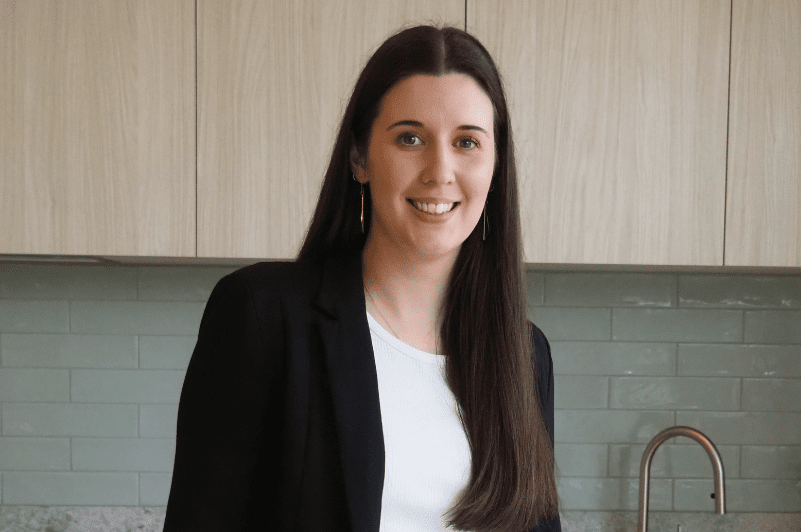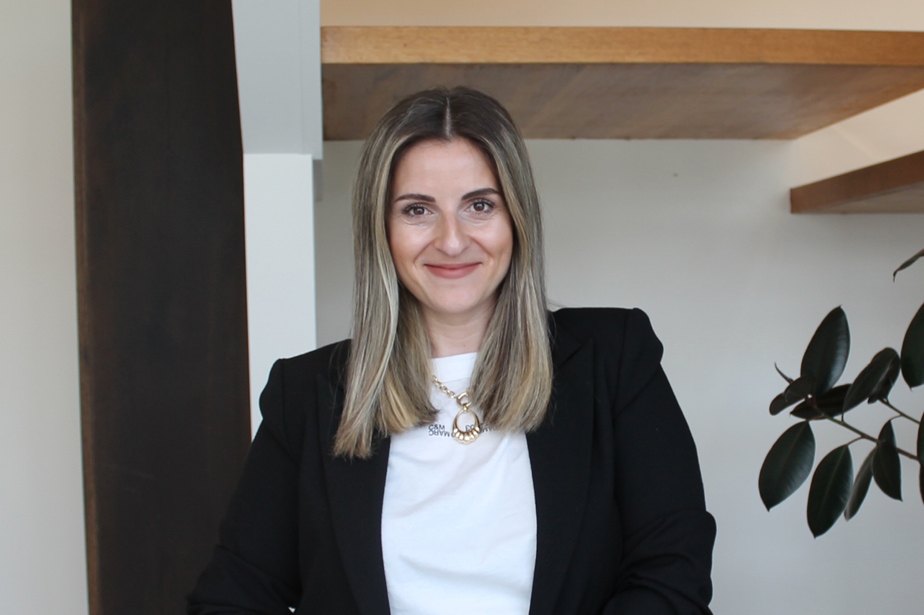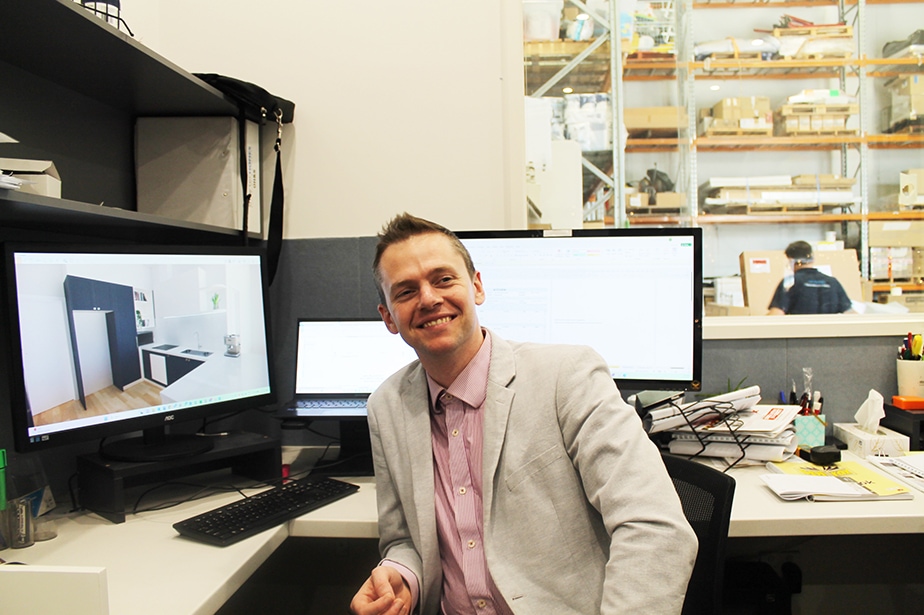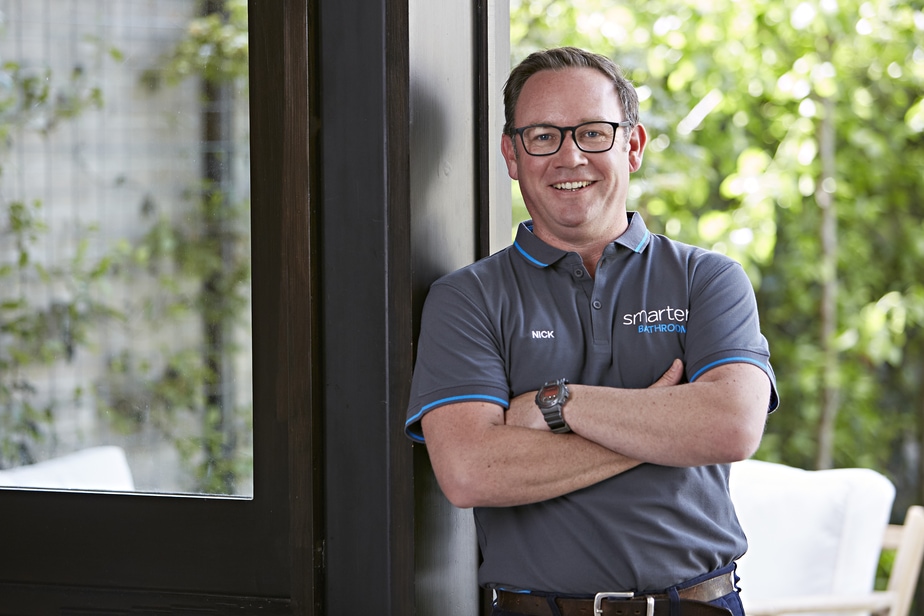Behind The Scenes of a Bathroom or Kitchen Renovation
We invite you into the world of bathroom and kitchen renovations with real conversations with some of our team members at smarterBATHROOMS+. Have you ever wondered what we think about when you walk into our showroom, welcome us into your home, or when we have the privilege of renovating your home?
In this post, you’ll receive a smarterBATHROOMS+ insider view into our intricate world of renovation. We sit down with dedicated members of our team and explore their day-to-day roles, their thinking, and our processes that turn our clients and interior designers’ concepts into reality, from the very first idea to the final finishing touches.
Ellen – Senior Designer
What are you looking to achieve when you attend a home consultation & what are you looking for from the client during that meeting?
‘During my home consultations, I tend to focus on establishing six clear outcomes for me and the client in this initial get together.’
‘Understand the client’s needs. I want to make sure that what the client is looking to achieve in their renovation when you’re seeing the rooms for the first time, is possible. It’s also important that what they are looking to renovate also meets our criteria as a professional bathroom and kitchen renovator.’
‘Setting expectations is probably the easiest conversation to have with a potential client. As we’ve renovated so many homes, I can be confident that what we propose by taking the client through the processes we follow, to how this sets the timelines. This ultimately feeds into their understanding and whether their expectations were feasible at the beginning. When you take a client through this, it does give them peace of mind.’
‘The client’s project. I want and need to know all about the client’s project – What’s their vision? their desires? What have they seen? Can they show me something? What do they like? What don’t they like? And are there any special requirements they may have in mind? Level of functionality and which colours do they like? Who’s using the space? Any thoughts on fixtures, fittings and even tiles. Without this level of insight, I can’t share my design or renovating thoughts, ideas, and considerations based on their vision, and what they may not have thought of.’
‘Some clients are happy to present the renovation as a blank canvas with a budget, with the simplest outcomes. Then it’s up to me to be the inspiration. It’s reasonably rare as most clients have an idea and yet it does happen after they’ve seen some of the other bathrooms or kitchens we’ve designed.’
‘I try to get an idea about the client’s style. Everyone has a style in some way and sometimes it’s the smallest of things or quite grand depending on their home. There may be distinct colours, furniture, paintings, or personal treasures that are on display. It’s great to have conversations about their style, likes and dislikes.’
‘And finally, a little clarity. By the end of our meeting, I want the client to have a clear picture of what smarterBATHROOMS+ can do for them, and what the client is looking for so when we move to the next stage, which is our initial proposal, everything is crystal clear from all sides.’
‘As a designer, I work closely with the client to try to narrow down their style and then come up with an outcome that meets the client’s needs and wants. I never lose sight that any renovation is a collaboration and my role is to guide the clients, inject ideas and thoughts, and from time to time, intervene to prevent a client from making errors in the end design and selection results of their renovated bathroom, kitchen, and laundry.’
‘People are also sometimes surprised at how far away start dates are and at how long real renovations take due to watching TV shows like The Block. The reality is that DIY shows like those do not portray the true reality of renovations and how lengthy the process can be.’
How do you present a proposal to the client?
‘After we’ve finalised the design concept, we schedule a second meeting where the client drops by our showroom, and this meeting is called a Revisit. The client then gets to sit down with me and I take them through their project. The way we present things can vary depending on the project. Sometimes, I’ll put together a mood board that gives a good overall feel for the design. Other times, I might lay out sample boards, including things like tile samples, that I think the client will love.’
‘I will then take the client through a special booklet. This booklet includes all the important design and concept information: quotes for the materials needed for the project, the initial concept drawing, a detailed floor plan, and 3D visual renders of the room to show how it will look after the room is renovated. These 3D visual renders show the room with the client’s choices incorporated as well as some recommendations from me, the Designer.’
‘Every revisit is unique, tailored to each client’s specific needs and preferences. So, it’s a personalized touch that makes a difference and makes the role enjoyable.’
What does a typical week look like?
‘Most days I’ll have an onsite meeting with an existing or potential client. This could be an ‘in-home consultation’ with a client where I am meeting them for the first time or a selection meeting with an existing client where we’re discussing and implementing the client’s choices (fixtures, fittings, colours, flooring, finishes, tiles, appliances, benchtops, accessories, and even where the power points go based on the designs).’
‘Other days can consist of a ‘job start’ meeting which happens on day one of the renovations commencing onsite. This is an exciting meeting as the client meets the Project Manager who will oversee the onsite works, manage the trades, and handle any client concerns or issues during construction through to the completion of the project.’
‘This is where everything becomes real for the client and me as protection goes down throughout the home, skip bins are set up and demolition usually begins before our meeting is over!’
‘The look on clients’ faces when the smarterBATHROOMS+ project teams arrive is quite the thing. I think they expect a builder and a few trades, when in reality it’s like a renovation regiment has just landed at their home. Everyone knows what they are doing and off they go.’
‘Another visit to the client’s home could be meeting our tilers for a ’tile layout’ meeting, this meeting allows the tiler and I to collaborate on exactly where the tile joins should be and the layout of feature tiles, etc. so we can make sure we are getting the best result for the clients.’
‘When I’m not out of the office, I’m creating and preparing designs, selections, proposals, initial quotes and final contracts, discussing renovations with the Project Managers, sharing ideas with other designers, attending presentations on new products and finishes and of course, arranging follow-up meetings.’
What’s the most challenging part of your job?
‘All of the above. The role is challenging and yet it’s so rewarding. I suppose getting down to the nitty-gritty, it’s finding the perfect tile or tapware look for every project and this can sometimes be endless as there are so many products and so many possibilities! Working with an existing framework can also be demanding as we’re trying to find our clients the best design within the existing footprint, and this requires out-of-the-box thinking. Saying that, it’s so rewarding when you nail the brief, and realise those initial constraints make you a more creative interior designer.’
And the most rewarding?
‘For me, the best part of the job is when my clients get to see their newly renovated space for the first time. As a designer, you can visualise how the space will look early on. As we do this all the time it’s quite easy for us to imagine the result, but for our clients, it’s not always like that, even though we provide 3D visual renders of the outcome. When they see it all coming together and tell you just how happy they are, it just makes the hard work worthwhile. Knowing that you helped someone create a space that makes their life easier and makes them so happy is the best feeling.’
Dee – Detailer & Architectural Draftsperson
What is your role in the renovation process?
‘As a Detailer, my role is to document all the products that are chosen by our client in the selection meeting. I make sure to check that these choices are not just great on paper but are also technically applicable, buildable or we’ll have issues or concerns during implementation. Importantly (and clients do like this), I make sure that what’s being selected is affordable within a range and the client’s budget. Clients often see something they would love to have and yet when it’s been truly costed, reality bites. Put simply, I confirm whether a selection will work or not.’
‘The designers have a good understanding of this too, and we work closely together to produce the best outcome for the client. If I spot anything that will potentially be a cost issue or cost more than expected, I’m quick to give the client a heads-up so that they are aware of what they are selecting. It’s all about keeping things open and transparent so they can make informed decisions.’
How does the construction drawing/drafting process work?
‘I take all the ideas and notes we gathered from the building inspection and the selection meeting to draw the project. I pay special attention to making sure all the measurements are accurate so that everyone on-site or from our suppliers can easily understand what’s required to be built with detailed specifications.’
‘I’m also responsible for obtaining quotes for things like products, cabinets, stone, windows, doors etc. Basically, everything we need post-selection meeting. It’s super important that these quotes match up perfectly with the drawings so that everything runs smoothly.’
‘I also create the 3D visual renders for the renovation to best demonstrate to the client what the renovation outcome will look like. Clients’ reactions to these are quite amazing. The renders bring the design to life.’
Once you find out a client’s budget, how do you navigate it & what levers do you use to help the client stay under budget?
‘Part of my role is all about helping our clients save money even after they’ve made their initial choices. To do that, I put together a price variation report that shows them how costs have changed since they first picked everything out (where costs have gone up or down), so they know exactly where their money’s going.’
‘If I know a client is on a tight budget or getting close to their limit at the start of the selection process, I’ll be mindful to keep things within the range of what was initially quoted and flag anything that will come at a higher cost. As it’s all about making sure our clients stay informed and their project stays on budget.’
What are the challenges you face as a detailer?
‘When it comes to building, sometimes unexpected things can happen and require further detailing to build it correctly. Other challenges are clients sometimes looking to construct or design the impossible but we always come to a compromise when I can show them how and what they are looking to do will create short and long-term problems I know they wouldn’t want.’
Another challenge would be keeping our clients under the umbrella of our trusted and reliable network of product suppliers so that way, we can be super confident in the quality and how things will turn out and complete the project smoothly.’
‘In my experience, projects where clients bring in their products, and sometimes brought in from overseas, tend to run into problems more frequently. By sticking with our suppliers, and we have access to pretty much everything, we’re minimizing those minor and major technical and delaying issues.’
And what’s rewarding?
‘What I love most about my work is building real connections with clients who are on this journey with us from start to finish and it’s really rewarding to see a project take shape, watching all the pieces coming together just right! ‘
‘Another rewarding aspect would be receiving great feedback and appreciation from our clients, it’s incredibly fulfilling knowing that I was a part of changing the spaces people use most in their homes to better suit them.
The best part is when we hear just how much our clients love the final result and how it improved their day-to-day lives.’
Aaron – Senior Detailer
What role do you play in the selection meeting?
‘Before the selection meeting, my role as a detailer involves drawing up the selection documentation which essentially acts as a canvas based on the designer’s initial design and vision for the renovation. When our Building Inspector John, visits the client’s property to carry out a full inspection, he takes lots of measurements that we then use as information to enhance the designer’s original drawings.’
‘Once we’ve prepared the selection documentation, we print it and bring it to the selection meeting which includes the Designer, Me, and the client. During this meeting, we go over the room layout and discuss where everything’s going to be placed. If any challenges pop up, it’s my job to say, “Let’s bring that back as technically it may not work, and yet here is a solution”. I make sure that the renovation plan is accurate and provides clarity to the client.’
‘I take lots of notes during the meeting about everything that’s been discussed which I later use to create the construction drawings. Once the documentation is complete, we hand it over to the Project Manager overseeing the renovation project.’
How does the construction drawing/drafting process work?
‘During the selection meeting, the designers will be hand drawing over the selection documents we’ve prepared which we deliberately greyed out to make it easier for them to draw over and make amendments with a pen.’
‘Afterwards, we scan the documents and head back to the original project where we update everything that was discussed such as the type of handles the client wants, their choice of appliances, cabinetry colours, stone type, etc.’
‘Then we bring those choices to life! This part of the process typically takes around 2 – 3 weeks after the selection meeting. Initially, the designers create a 3D render to showcase the project. Once I’ve received it, I update it with all the products and choices made by the client and the team during the selection meeting. It’s giving the original 3D render a fresh new look with all the things the client and the team handpicked together.’
Once you establish a client’s budget, how do you navigate it & what levers can you use to help the client stay under budget?
‘Traditionally, the client will have a budget in mind as we provide an initial quotation. If we’re close to matching their expectations, the client will proceed and yet there can be unknowns even at this stage. We are transparent throughout the process and it’s only when we carry out the detailed Building Inspection that unforeseen construction specifics arise. We identify any construction hurdles that may impact the price and let the client know in detail.’
‘The construction budget is easily manageable as a rule, and it’s only when the client comes in for the selection meeting and chooses fixtures, fittings, and finishes such as handmade tiles, natural stones, and other things that weren’t part of the initial plan by us or them, is where the price tends to go up. It’s an exciting process for the client and so we openly communicate how their choices have influenced the price, showing them exactly where the price has gone up or down and providing them with lots of options. We’re very transparent with that, and if it doesn’t sit right with them, we suggest other design options to bring it back down to a level they are happy with.’
That is one of the main roles of my job as a Detailer, it’s to show them what’s driving the cost increase, suggest alternatives and find solutions to assist with cost savings. This can be tricky sometimes, but we always find a way to make it work. It’s also important to remember that tile prices vary, and factors like the amount of tiling and even the certain ways you lay tiling can all have an impact on the overall cost.’
Nick – Project Manager
What is your role in the renovation process & how do you ensure that everything runs smoothly for the client?
‘As a Project Manager, I oversee the full renovation project build. Part of my role is to contact our clients to lock in the start date, run through the project build aspects, confirm the contract’s end date, and then get to work scheduling the different trades required and when.’
‘To keep everything running as smoothly as possible, we are in constant contact with our build office so that we can make sure we’ve got all the necessary tools, supplies, and materials ready for the job.’
‘We also use a lot of platform technology that we’ve created that allows me to be in constant control throughout the whole build and renovation process.’
What does your day-to-day look like?
‘During the week, I’m doing site visits, checking that all the jobs have been completed as per client’s renovations schedule and that they meet our standards. I oversee the progress of all my sites and come up with solutions if adjustments are needed. With so many moving parts, if something needs to be adjusted in one trade, it tends to have a flow-on effect, so I make sure everyone involved is updated and knows exactly what’s happening next. Great communication is extremely important and is one of the pillars of a smoothly run renovation.’
What levels of communication do you have with clients?
‘It varies depending on the home and project, some clients still live at home and then other clients just want to get away and return when it’s all done. Not one client is the same as the other. As a benchmark, if a client is on-site then we can often communicate daily, and yet we like to stay in close contact with all our clients by sending them our weekly schedules with all the latest updates and we use communication channels according to the client’s preferred channels – whether it is e-mail, SMS, phone calls, or whatever suits them.’
‘If a client can’t be present on-site, we keep them in the loop by sending them photos of the renovation progress, and to make sure we’re on the same page, we follow up at the end of each week for an update. This is so that we can make sure we’re on top of everything and that things are running seamlessly.’
What are the most common questions you get asked by clients?
‘One of the most common questions we get asked is whether we can do additional renovating or general trade jobs while we’re in their home. We call them variations. While we’re there renovating with carpenters, electricians, and plasterers, clients can see the transformation and suddenly look at the rest of the house and make requests or ask lots of questions about getting other things done. It’s completely understandable, so we try to help our clients where we can. It can and does add additional time and workload to the projects and yet it makes sense as we can manage their costs, offer alternative options, and find solutions that can help them save money depending on what they’re looking to do.’
What are the challenges you face as a Project Manager?
‘It’s all about being on top of renovation projects, variations, and any surprises. It’s not uncommon for build variations to come up as though we carry out a detailed building inspection, during the demolition we uncover floor, wall, or technical issues that you just can’t see until you have stripped away a room to its bare shell.’
‘The regulatory standards and compliance required in home builds and renovation has changed massively over the years and of course when we finally get into the home and strip away, you discover a lot of, let’s say interesting ways, that previous trades or builders carried out when completed the job. Though acceptable in the past, you can’t do it or allow it to stay today, so we correct a lot of these issues to ensure, safety, compliance, and longevity in the renovation build. Clients genuinely value this part of their renovation if it comes up. It gives them peace of mind.’
‘A critical part of our building inspection process is to check for asbestos in the client’s house as many people are unaware of it hiding in their home until they get a renovation or demolition. It’s often the house’s age that indicates whether asbestos will be found or not and John our Building Inspector is highly skilled at knowing exactly where to look, usually in places like flooring, window sills, roofs, etc.’
What are the rewards of being a Project Manager?
‘The end renovation result and the relationship you build with the client along the way is a very rewarding journey. When the client is thrilled with the result, it makes all the hard work and effort worthwhile. It’s the transformation from what they had to the completion. They’re putting their trust in us and seeing them happy and content with the final result makes every moment in this job worth it. I don’t think it’s any secret, that builders, trades, mechanics, and real estate agents may have a negative reputation with many members of the community and so, when they experience the positive and professional way we operate and communicate, the transparency and provide solutions for issues that come up. It does build a bond.’
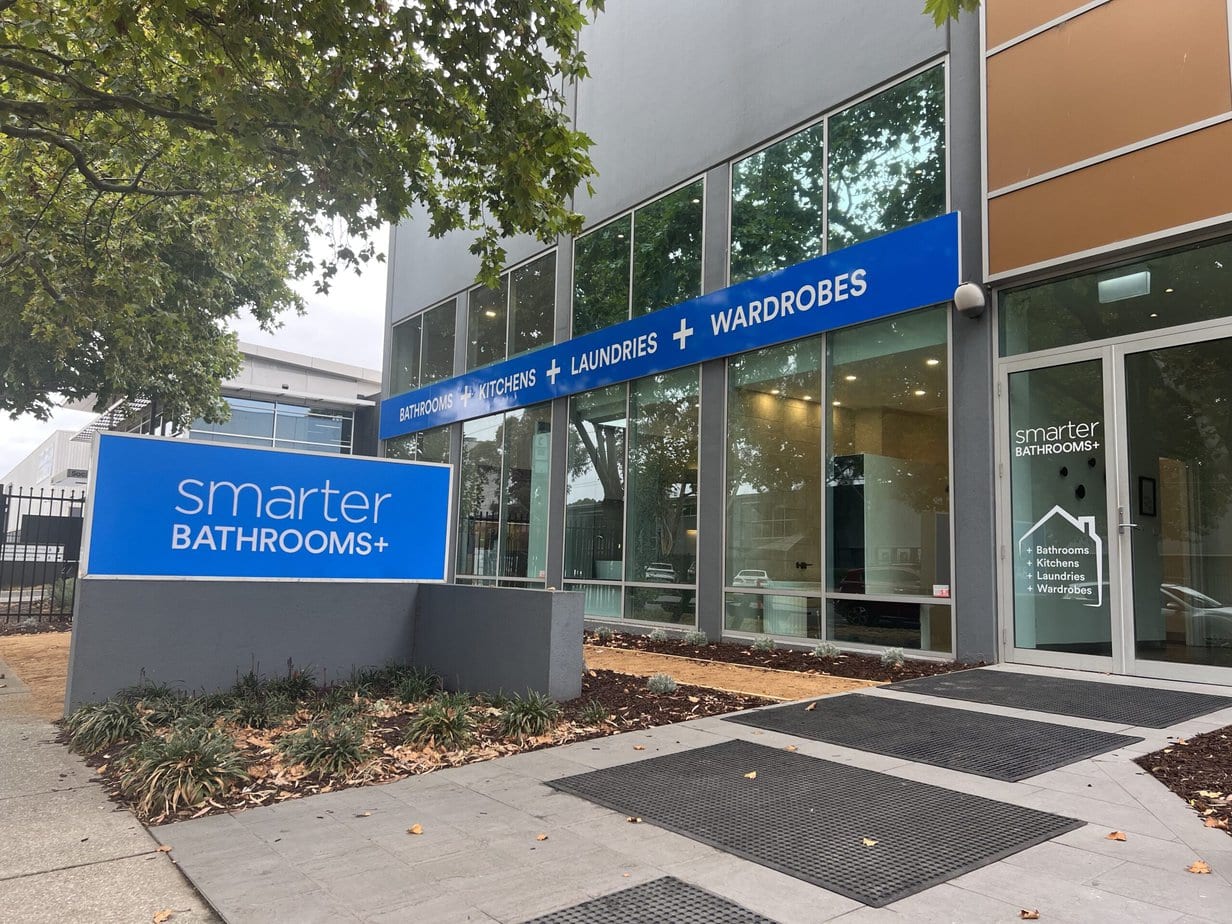
If you are looking to learn more about the Bathroom or Kitchen renovation process, download our free Bathroom and Kitchen Advice Guides .
If you’re ready to collaborate with the smarterBATHROOMS+ team, call us today on 1300 662 838 to speak to one of our experts or book a FREE in-home consultation with our award-winning designers to start your renovation journey!
Inspiration and advice
As featured in




